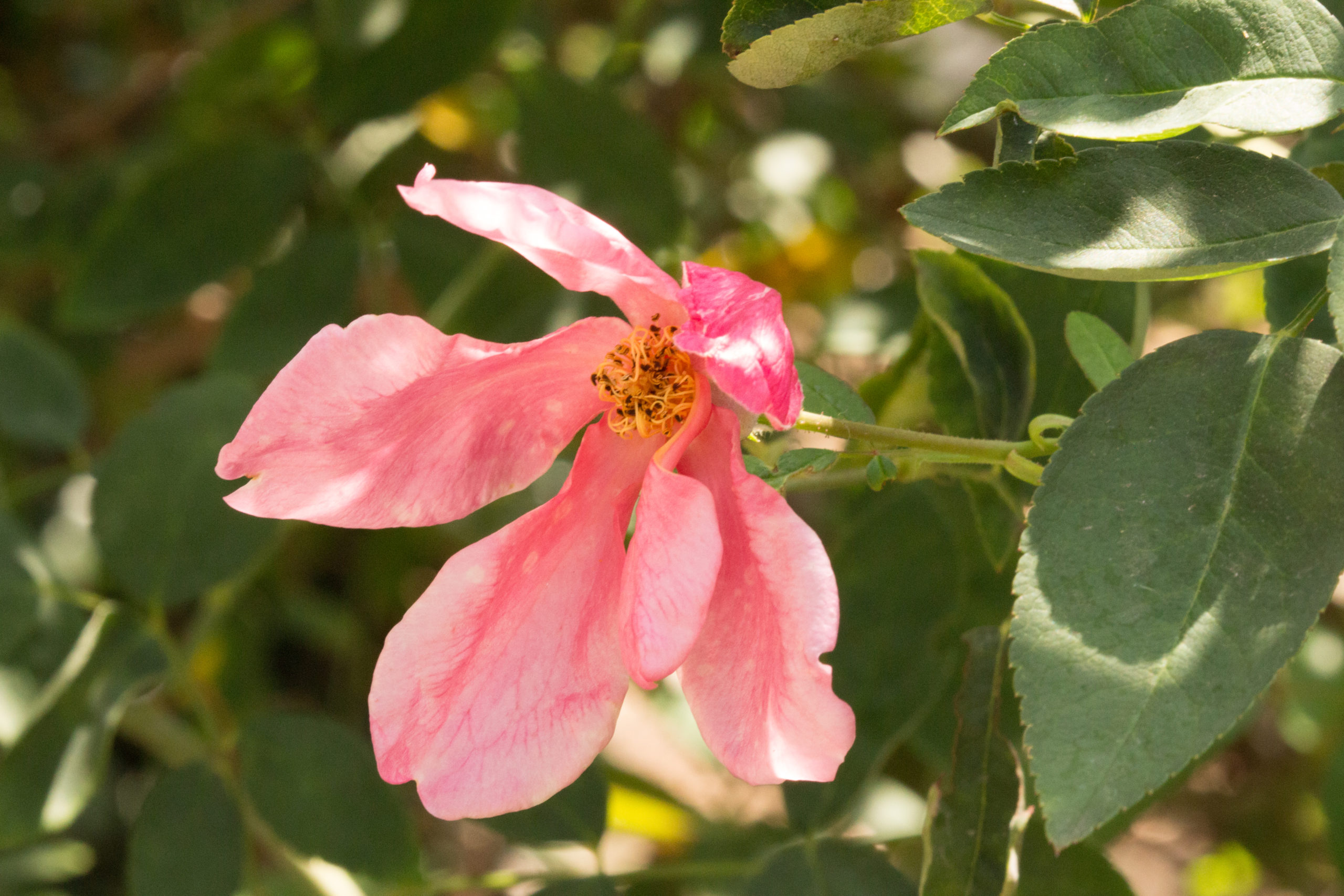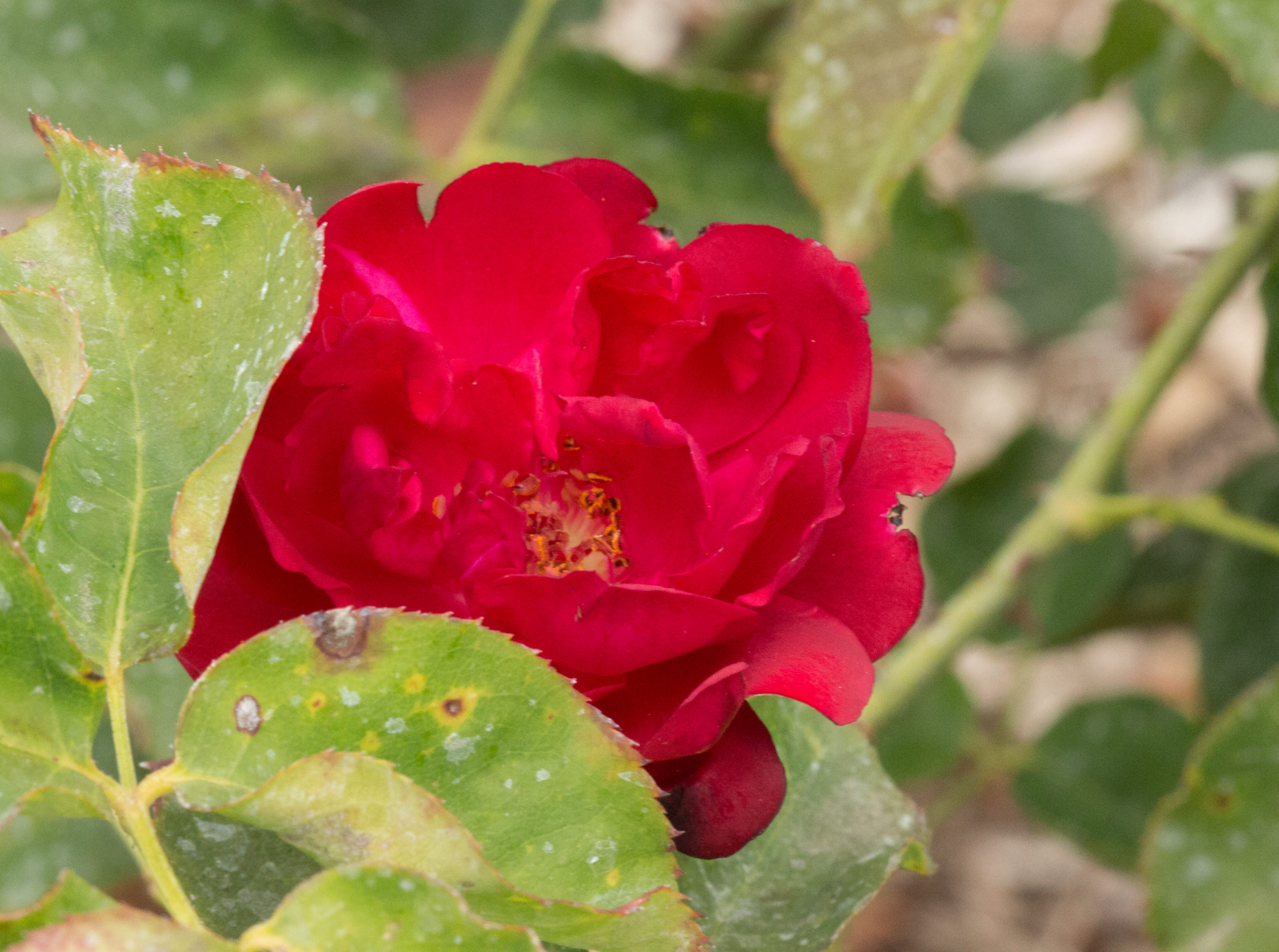GardenZeus Recommendations for Old Garden Rose Varieties in California Zone 15
June 29, 2016
Author: Ann Clary
GardenZeus Southern California / Organic Gardening: Flowers and Ornamentals / Queen of the Garden: Growing Roses in California / The Mighty Garden Archive
Old garden roses, also known as “heritage roses” or “antique roses,” are a relatively unfamiliar but excellent choice for landscape plantings in your zone. By definition, old garden roses predate 1867 (the year that La France, the first Hybrid Tea rose, was introduced). They produce unequaled mass displays of beautiful and often fragrant blooms, and can be surprisingly drought-tolerant, heat-tolerant, and reliable in your zone. Although many old garden roses bloom only once per year, generally in spring or early summer, they may produce significantly more flowers in that single bloom than other roses that bloom throughout the year. Try at least one old garden rose; you may just discover a new favorite.
- Mutabilis (Rosa chinensis ‘Mutabilis’, pre-1894) is originally from China. It is called “the Butterfly Rose” because of its unusual flowers which change color and darken with age; the single petals open yellow, then change to orange, to rich dark pink, and finally to crimson. The rosebush may be covered in all these colors at one time, appearing as if a group of multi-colored butterflies has settled on the bush. Plant growth is open and well branched, easily reaching 6 feet by 6 feet. Mutabilis can also be pruned to form a spectacular rose tree up to 10 feet in height, or it can be trained as an espalier. New growth is bronze. Mutabilis is susceptible to mildew and black spot; remove diseased foliage before it infects either robust new growth or adjacent roses. It has little fragrance but can bloom every month of the year in your zone.
- Francis Dubreuil (Tea, 1894) is thought by many to be resemble the red tea rose depicted in many Old Master Paintings. Named for rose breeder Francis Dubreuil, whose daughter married Antoine Meilland and lent her name, Mme A. Meilland, to the iconic Mme A. Meilland or Peace rose. Beautifully formed long black buds open to 4 inch velvet crimson full blooms that turn black with age. Blooms all season, but gardeners should deadhead to maximize flowering. Francis Dubreuil is an excellent choice for Southern California coastal areas but will perform best in afternoon shade. Guard against mildew and blackspot and this spectacular rose will reward the effort. Plant grows to 4 feet by 4 feet. Great intoxicating old rose fragrance.
- Queen of Denmark (Alba, 1826) has the dubious distinction of being the first rose subject to a lawsuit: its breeder, John Booth, was falsely charged with selling an existing rose under a new name. The exquisite 3 inch flowers have dark pink centers fading to soft pink at the edges, flat rosette shapes and button eyes. Gardeners who want to maximize color in the landscape will want to place Queen of Denmark with care: take advantage of its massive spring color display but place reblooming plants around it as Queen of Denmark blooms only once per year. Flowers are borne in heavy clusters on a heat tolerant, thorny-stemmed shrub that reaches 6 feet by 6 feet. Attractive green foliage. Its strong old rose scent is why many gardeners choose to grow old garden roses.
- Charles de Mills (Gallica, 1786) is an ideal old garden rose for cooler gardens closer to the coast; this beautiful rose tolerates moist weather and has extremely good disease resistance. The 4 inch rich crimson flowers take on a hint of purple with age. Very full quartered blooms with closely packed petals appear very flat. Charles de Mills produces a special display of spring color, but blooms only once. The bush is attractive and upright, reaching 5 feet by 4 feet, but may benefit from some support. Light rose fragrance.
- Rosa Rugosa (Rugosa Species. first introduced into North America in 1845 from Japan and China, where it has been cultivated for centuries) has bright magenta-edged single flowers with wrinkled petals and yellow stamens. As the season progresses, ripe red hips, an inch or more in diameter, appear on the shrub at the same time as the flowers and are ideal for making rose hip tea. Its leaves are “rugose”— Latin for wrinkled. The bright green, wrinkled leaves typically turn golden yellow before falling at the end of the season. Rosa Rugosa is one of the few naturally repeat flowering species roses, with the main flush in the spring. It is a vigorous plant in many ways: it is a suckering shrub, developing new plants from the roots, and it forms dense thickets. It can reach 7 feet by 7 feet, making it an excellent choice for a large barrier hedge. Gardeners will want to have a pair of thick, sturdy garden gloves to handle the stems covered in long prickles. Choose Rosa Rugosa for a difficult location as it can grow where other roses cannot, such as in clay soils, highly composted slightly acidic soils, and cool shady areas. It is also extremely tolerant of seaside salt spray, wind and drought. Rosa Rugosa dislikes pruning and chemical pesticides. Disease resistant. Extremely strong old rose fragrance.
- Rosa gallica ‘Officinalis’ is a rose of great antiquity from c.1400 or before with a famous ancestor: The Red Rose of Lancaster. The Red Rose of Lancaster and the White Rose of York were chosen as the two emblems representing opposing parties in the War of the Roses, a series of wars fought for the control of England in the Fifteenth Century. It is also known as the ‘Apothecary’s Rose’ because for centuries it was grown for its perceived medicinal characteristics. Yet this ancient rose is still highly regarded, as many rosarians still consider ‘Officinalis’ to be one of the very best garden roses. Large semidouble magenta flowers fade as they age and open flat around gold stamens. ‘Officinalis’ makes a single annual massive display of flowers borne in clusters. Small round rose hips grace the plant in autumn. Dark green foliage. Healthy and reliable plant grows to 4 feet by 4 feet. Pure old rose fragrance.

